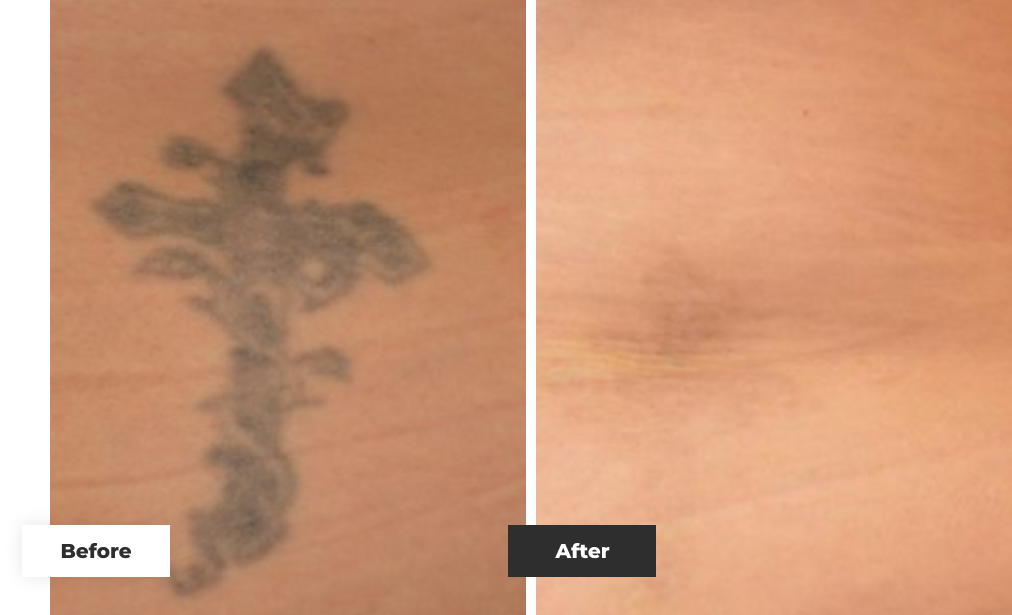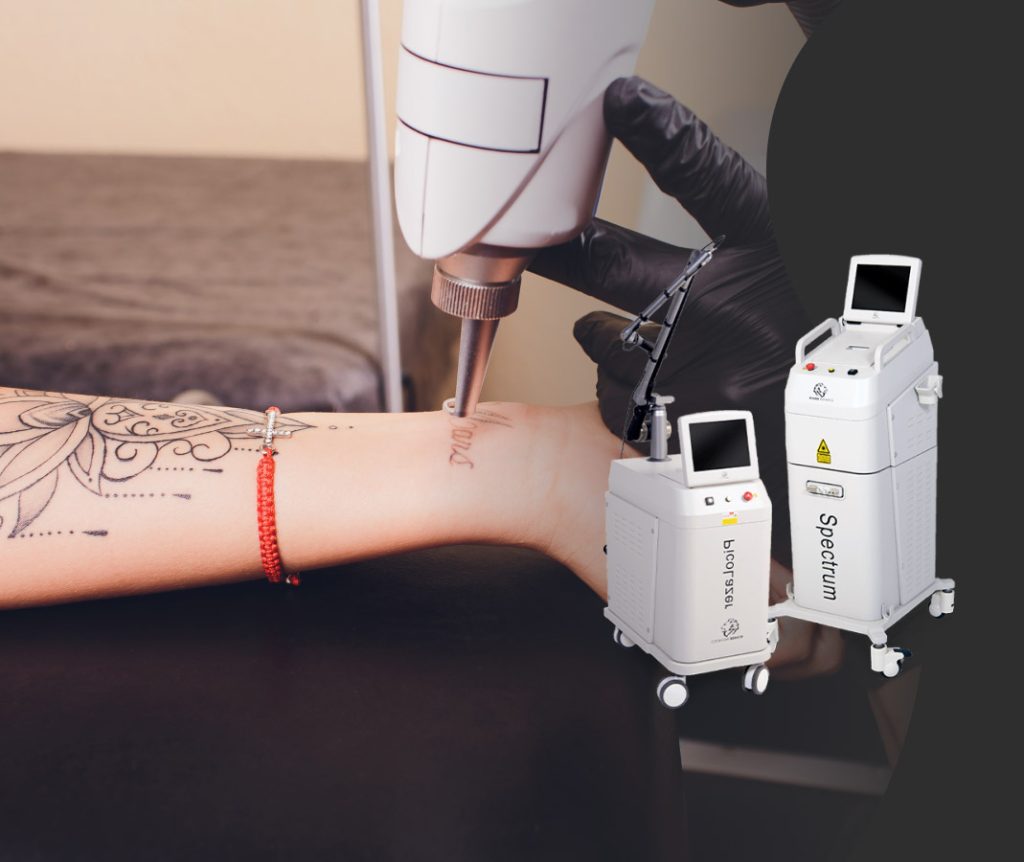Tattoo Removal
Process that uses laser technology to fade or eliminate unwanted tattoos from the skin.
Laser Tattoo Removal Benefits
- Effective Removal: Laser technology breaks down tattoo ink for gradual fading or complete elimination.
- Minimized Scarring: Precise targeting reduces the risk of significant scarring compared to other methods.
- Versatile: Suitable for various tattoo sizes, colors, and locations, providing flexibility in removal.

How does Tattoo Removal work?
It works by producing extremely short pulses of high energy light. The light is then absorbed by the particles of the tattoo pigment but doesn’t get absorbed by the surrounding skin.
The tattoo pigment then heats up and starts to break down into small particles.

Q-switched Laser
The Q-switched laser treatment emphasizes precision for efficient tattoo removal, minimizing tissue damage and promoting swift healing.
- Selective Pigment Targeting: Q-switched lasers precisely fragment tattoo ink, minimizing surrounding skin impact and scarring risk.
- Broad Color Coverage: The 1064nm and 532nm wavelengths treat a wide range of tattoo colors.
- Diverse Applications: Q-switched lasers also address pigmented lesions by converting light energy into heat.
Frequently Asked Questions
The area is usually covered with ointment and a bandage which usually allows most patients to return to their normal daily routines.
Yes, vigorous exercise might cause some discomfort to the area and should be light activity for the first 72 hours.
- Hydration is very important for wound healing
- avoid alcohol 48hrs prior to procedure
- Do not take any anti-inflammatory medications such as ibuprofen, Motrin or Advil for 3 days prior to treatment, Talk to your provider if you are taking blood thinners
- The treatment area will go through a process of healing over 10-14 days and the body will need to absorb the ink over the next several months
- Avoiding water other than normal showering no baths/swimming
- Avoid sun exposure for 2 weeks after the procedure.
There can be side effects to the procedure such as blistering, swelling, pain, raising of the treatment area, minimal bleeding, scabbing, redness, temporary darkening depending on skin tone
Anyone with unwanted tattoos. The tattoo must be at least 6 months old to treat.
3 treatments minimum is usually needed, but can be anywhere between 6-10 treatments. The treatments are recommended every 6-8 weeks until desired results. Results are usually seen after healing is complete and each subsequent treatment
- Those with uncontrolled diabetes
- impaired wound healing
- currently taking blood thinners
- anyone with active skin infection or have been on antibiotics in the last 2 weeks
- pregnant or breastfeeding
- Good – Black, Blue, Dark Blue, Dark Green, Brown, Red, Purple, Orange.
Difficult colors to treat are – Tan, Yellow, Bright Green, Sky Blue
Laser tattoo removal typically does involve some level of pain. That said, many say that it hurts less than they expected. It’s a common belief that tattoo removal is excruciating, yet most patients say that the sensation of removal is comparable to having a tattoo applied. Common descriptions include the sensation of a rubber band snapping against the skin or bacon grease – basically it’s uncomfortable but bearable.